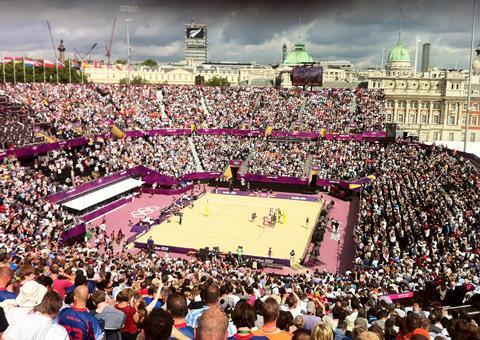To make major sporting events sustainable, we need to reuse existing infrastructure and be open about our mistakes | Opinion

Australia and New Zealand are leading the way towards a more sustainable model for major sporting events by hosting the FIFA Women’s World Cup 2023 in a mix of existing and newly built stadiums. But even as Australia presents this positive news, elsewhere the country grapples with the cost and sustainability issues that all too often still plague these global sporting events.
Just last week, the Australian state of Victoria announced that it would no longer be able to support the next Commonwealth Games (CWG) due to rising costs. It is the second time in the last CWG cycle that a host nation has forgone the opportunity to host the Games.
This is a clear indication that the global gaming model needs to be reconsidered and moves far beyond the established norms of legacy and sustainability. If the carbon argument doesn’t force some hosts to think critically, the cost clearly will.
It’s a dose of realism – the socioeconomic and political factors that shape global sporting events go far beyond the activity on the pitches, and this is where intelligent design plays a key role.
The men’s World Cup final between France and Argentina last year in Qatar was probably the biggest match in the tournament’s history and was watched by a global audience estimated at 1.5 billion. So it’s easy to forget that the last Men’s World Cup was also the most controversial in the tournament’s 82-year history – socially, ecologically and architecturally.
How on earth could a country of 3.5 million justify the environmental cost of building so many stadiums?
Criticism began almost immediately when Qatar won the bid in 2010. There was a problem with the heat which resulted in matches being moved to the cooler months of November and December, causing disruptions to the domestic football schedule. Then came stories of bad working conditions and even deaths on the construction sites.
From an architectural and sustainability perspective, concerns were initially raised about the long-term viability of Qatar’s eight stadiums. We know from previous sporting events around the world that even much larger countries struggle to find viable legacy uses for venues of this size and capacity.
How on earth could a country of 3.5 million justify the environmental cost of building so many stadiums? The tournament benefited from a compact park-like model that was more Olympic-like and offered an up-close spectator experience, but at what cost?
Perhaps best for the legacy of the cup and the region, as well as to conserve resources, would have been to co-align with neighboring countries such as Bahrain, Saudi Arabia, Abu Dhabi and the United Arab Emirates – a smaller but similar model to the US 2026 tournament. Such an approach could have allowed the bidding team to use existing infrastructure, which would have seen fewer, larger capacity stadiums built in tiny Qatar.
Time to challenge the norms
Based on our studio’s experience designing for the Olympics, the first point of contact for policies and estate planning should be with the office that accepts and coordinates offers. The aim is to deliver higher quality experiences for less money while challenging capacity biases and using technology to realize the most efficient solutions.
It’s worth noting that key elements of the Qatar tournament are being mined and this should be applauded, but if the premise was to build less from the start, the benefits would be tangible. Have the tournament capacity targets been set too high to make the longer-term legacy truly sustainable or commercially viable for future hosts? Can we start developing truly location/region focused tournament schedules?
Politics versus sports

The London delivery in 2012 was seen as groundbreaking as only what was really needed was built. London challenged the IOC’s requirements and encouraged the use of temporary overlays, while the Olympic program was reduced in line with the city’s needs. It is fascinating that both Beijing and London hosted the same event with the same number of athletes and the same sporting programme, but London significantly less. Even in the context of an Olympics, the Mies van der Rohe adage “less is more” still applies.
Unfortunately, however, the lessons learned were lost due to the way Rio de Janeiro was implemented in 2016. Brazil tried to make their mark with ambition and grandiosity, but in the process switched the clock back to the cumbersome Beijing model.
woo has worked on various major games bids, including the Rome and Boston Olympic bids, and we are now seeing a challenging pattern emerging. As with Victoria, we have seen too many successful applications withdraw their candidacy due to cost concerns. This underscores the need to make major sporting events financially and environmentally sustainable.
We need to talk
An open and transparent transfer of knowledge between host cities, past, present and future, is now crucial. Ultimately, starting with a fully informed brief allows prospective hosts to challenge and re-evaluate all prejudices, build only what needs to be built, and engage only in projects that leave a lasting legacy.
The transfer of knowledge must take place collaboratively and at an early stage. All too often pride steps in and we see that one host is unwilling to point out to the other the mistakes or weaknesses made.
plan ahead
Whether those games were key learnings or the pandemic has created a greater global understanding of how to work together, Paris 2024 and LA 2028 are already sharing their experiences.
Games and tournaments are now awarded earlier. Previously, the games were announced seven years in advance, but Brisbane, Australia, knows it will host the 2032 Olympics. We now have three games ahead of us where we have a tremendous opportunity for open communication and legacy planning.
A warning though. Don’t confuse a long lead time with good planning. Qatar had 11 years to prepare but remained inactive. The winning team could have used their exceptional lead time productively to help develop a more sustainable, holistic and heritage-based tournament, one that suited the host country rather than the host association.
As we grapple with the impact our entertainment has on resources and people, the cities and countries around the world that are taking on this hosting challenge need to share more. As long as the organizations and sponsors continue to benefit, designers must push for more flexible and collaborative thinking—there’s too much at stake not to.